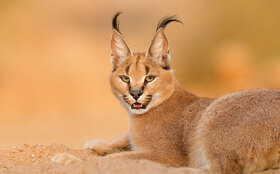Abu Dhabi’s efforts
The International Fund for Houbara Conservation (IFHC) mission is to protect bustards against extinction through breeding and careful management of their population. So far, they bred approximately 400,000 Houbaras, since when! Extensive research on the ecology and movement of Houbara has been undertaken by NARC across its breeding ranges over the last 25 years has provided important ecological information, vital for their conservation.



